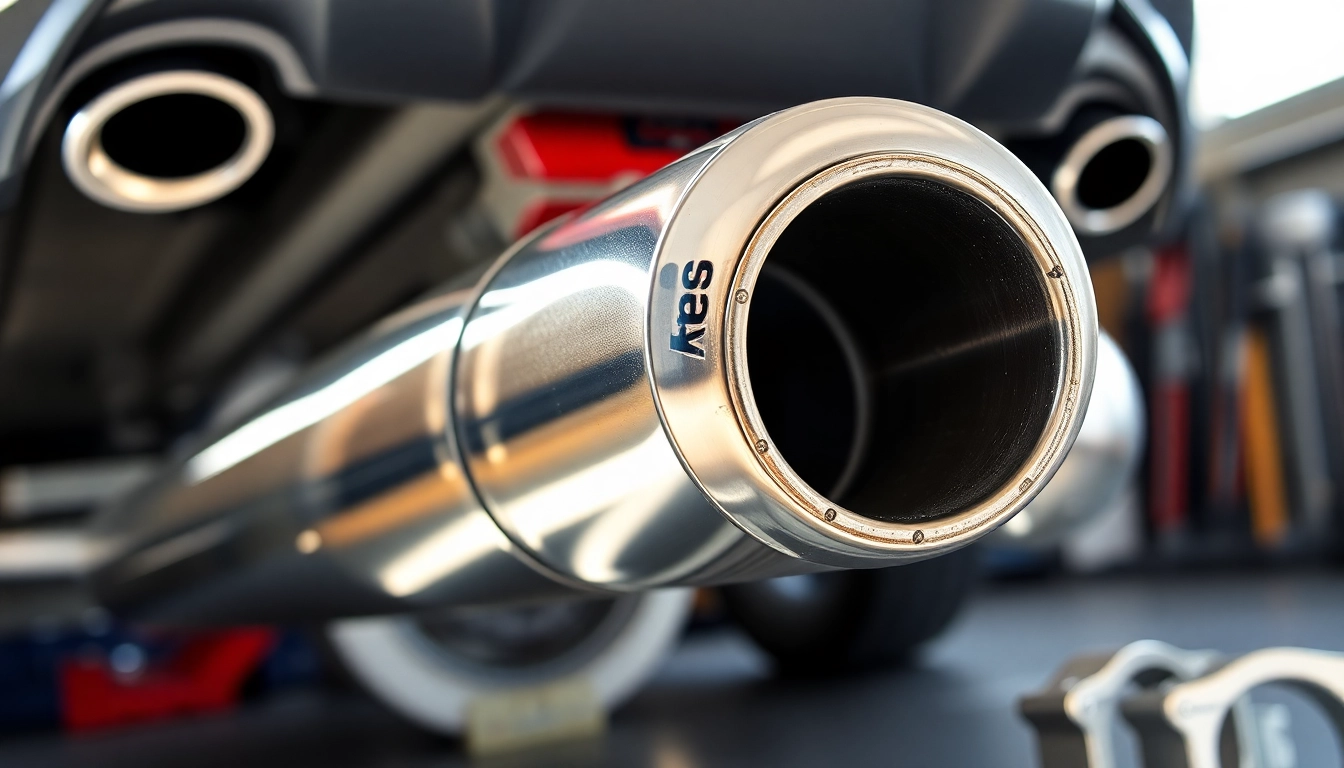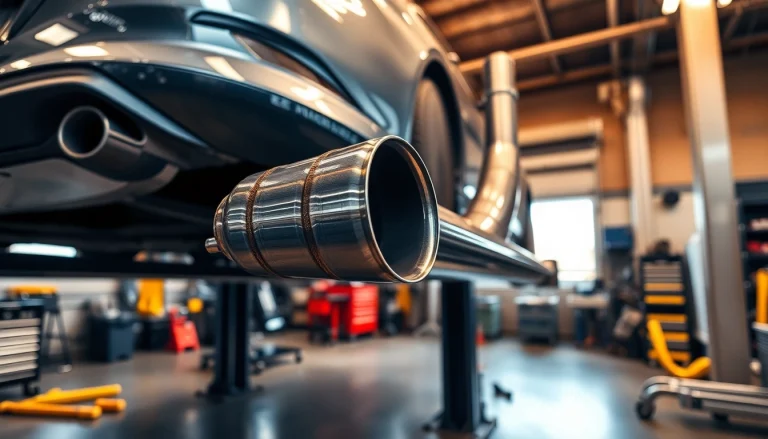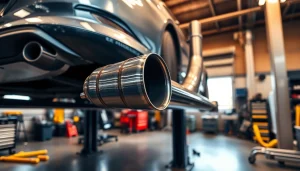What is a Single Midpipe?
Definition and Purpose
A single midpipe is a crucial component in the exhaust systems of various vehicles, specifically designed to enhance performance and improve sound quality. It acts as a connector between the headers or exhaust manifolds and the rear exhaust sections, facilitating the flow of exhaust gases out of the engine. The primary purpose of a single midpipe is to streamline exhaust flow, which can help optimize engine performance and efficiency.
Understanding the role of a single midpipe is essential for automotive enthusiasts looking to upgrade their vehicles. By reducing backpressure and allowing for better gas flow, a single midpipe can contribute significantly to improved throttle response and overall power output.
Components of a Single Midpipe
A typical single midpipe consists of various components that contribute to its function and performance:
- Material: Most single midpipes are made from high-quality stainless steel or other durable materials. This ensures longevity and resistance to corrosion.
- Flange: The flange connects the midpipe to the exhaust headers and rear section, providing a secure seal to prevent leaks.
- Mandrel-bent design: This allows for smoother turns and a consistent diameter throughout the pipe, minimizing restrictions in exhaust flow.
- Resonators: Some midpipes include resonators, which can modify sound characteristics and reduce drone inside the cabin.
How It Works in Exhaust Systems
The operational principle of a single midpipe is quite straightforward. As exhaust gases exit the engine, they travel through the exhaust headers into the midpipe. A well-designed midpipe minimizes turbulence and back pressure, allowing for a more efficient exit of gases. This reduction in resistance not only enhances engine performance—providing more horsepower and torque—but also affects the sound profile of the vehicle, resulting in a more aggressive exhaust note.
Advantages of Using a Single Midpipe
Performance Enhancements
One of the most significant advantages of upgrading to a single midpipe is the performance enhancement. Vehicles equipped with a single midpipe can experience increased horsepower and improved torque due to the enhanced flow characteristics of the exhaust system. A less restrictive design means the engine can expel gases more efficiently, resulting in quicker throttle response and improved acceleration.
Weight Reduction Benefits
Many vehicle performance enthusiasts also consider the weight of their exhaust system. A single midpipe is generally lighter than a dual midpipe setup, making it an appealing upgrade for those looking to reduce overall vehicle weight. This weight savings can lead to better handling and agility, particularly in performance and track settings.
Improved Sound Quality
Another appealing aspect of installing a single midpipe is the enhancement of sound quality. A single midpipe typically produces a more aggressive sound compared to a stock system. This change in exhaust note can provide a more thrilling driving experience, as well as enhance the overall character of the vehicle. For many enthusiasts, the auditory experience is just as important as performance metrics.
Choosing the Right Single Midpipe for Your Vehicle
Compatibility Considerations
When selecting a single midpipe, it is vital to ensure compatibility with your vehicle’s make and model. Different vehicles have specific fitment requirements due to factors like engine size, exhaust routing, and existing components. Always verify that the midpipe you are considering is designed to be compatible with your vehicle to avoid any installation issues.
Material Quality and Durability
The material used in the construction of a single midpipe greatly impacts its performance and durability. Stainless steel is a popular choice due to its resistance to rust and corrosion, contributing to a longer lifespan. Additionally, considering the thickness of the material can affect its effectiveness; a thicker gauge may provide better durability and noise damping, while a thinner material may be lighter but less robust.
Design Variations and Their Impacts
There are various design variations available for single midpipes, each impacting performance and sound. Some midpipes feature a resonated design, which can help alter the tone of the exhaust note, making it deeper or quieter. Others may focus solely on maximizing flow with a non-resonated design, emphasizing performance above sound quality. Consider what you want to achieve with your upgrade—whether it’s sound enhancement, performance gain, or a balance of both—when selecting your midpipe.
Installation Process for Single Midpipe
Tools and Equipment Needed
Installing a single midpipe can be a rewarding DIY project, but proper tools and equipment are essential for a successful installation. Key tools include:
- Jack and jack stands or a vehicle lift
- Socket set or wrenches
- Torque wrench
- Cut-off saw (if modifications are required)
- Exhaust hanger removal tool
- Safety equipment (gloves, goggles, etc.)
Step-by-Step Installation Guide
Follow these general steps for installing a single midpipe:
- Preparation: Ensure the vehicle is safely elevated and supported using jack stands or a lift.
- Remove the old midpipe: Disconnect the exhaust hangers and flanges, and remove the old midpipe from the vehicle.
- Install the new midpipe: Align the new single midpipe with the flanges and hangers, ensuring a secure fit.
- Tighten connections: Use a torque wrench to tighten the connections according to manufacturer specifications.
- Hanger installations: Reattach any hangers to secure the midpipe in place.
- Check for leaks: Start the vehicle and check for exhaust leaks; re-tighten if necessary.
Post-Installation Maintenance Tips
After installation, it is essential to maintain your single midpipe to ensure optimal performance. Regularly inspect connections and hardware for signs of wear or rust. Periodic cleaning of the midpipe can prevent buildup and extend its lifespan. Also, keep an ear out for changes in exhaust sound that might indicate a potential issue with the installation or component integrity.
Common Questions and Myths About Single Midpipes
How Does a Single Midpipe Compare to Dual Midpipes?
The primary difference between a single midpipe and dual midpipes lies in exhaust flow dynamics. A dual midpipe allows for more separation of exhaust gases, potentially leading to a sound that some enthusiasts prefer. However, a single midpipe can produce a unique, aggressive tone while providing enhanced performance. Your choice should depend on personal sound preferences and performance goals.
Will a Single Midpipe Void My Warranty?
This is a common concern among vehicle owners. While modifications like a single midpipe may affect warranties, it largely depends on the manufacturer’s policies and the nature of the modification. It’s advisable to review your warranty terms and consult with the manufacturer for clarity on how modifications impact coverage.
Can a Single Midpipe Affect Emissions?
A single midpipe can influence emissions, particularly if it alters the exhaust flow significantly. In some cases, cars modified with a single midpipe may not pass emissions tests, which is vital for compliance with environmental regulations. If emissions are a concern, consider options that maintain the original catalytic converter and emissions systems.








